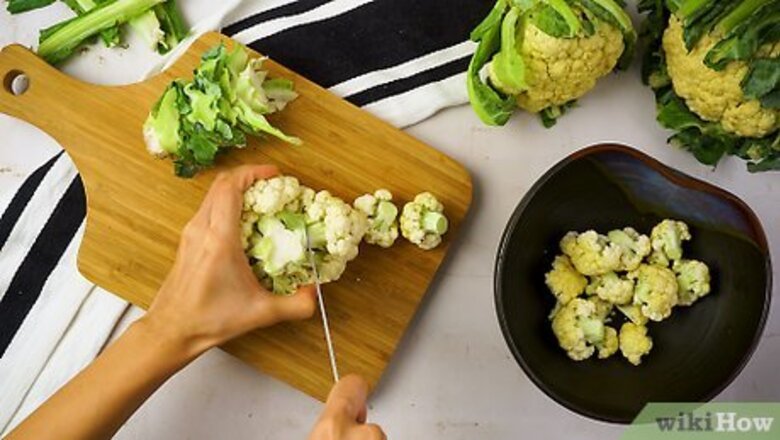
views
- Cut the cauliflower into 1 in (2.5 cm) pieces. Then, bring a large pot of water to a boil and boil the cauliflower for 3 minutes.
- Pour the cauliflower through a strainer and transfer the veggies to a bowl of ice and cold water. Let the cauliflower soak for 3 minutes.
- Then, drain the cauliflower through the strainer. Cook with your veggies or dry them off before storing them in the fridge or freezer.
Boiling
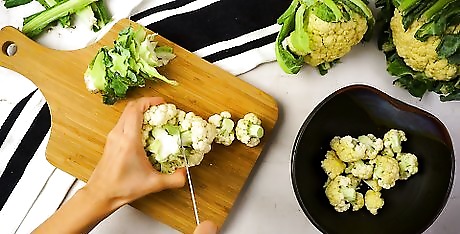
Cut the cauliflower into 1 in (2.5 cm) florets. While the water comes to a boil, rinse your fresh cauliflower. Take a sharp knife and cut evenly-sized florets. Cutting even pieces will ensure that the cauliflower blanches in a uniform way.
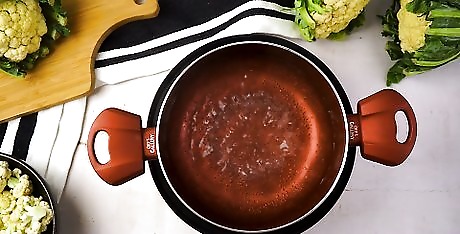
Bring a large pot of water to boil. Fill a large pot about 3/4 full of water and set it on the stove. Put the lid on the pot and turn the burner to high. The water should come to a vigorous boil before you add the cauliflower. Since the cauliflower will float to the top of the water, ensure that whatever pot you use is large enough to comfortably hold as much cauliflower as you like. Then fill the pot 3/4 full of water.

Boil the cauliflower florets for 3 minutes. Carefully lift off the lid from the pot and add the cauliflower florets. Leave the lid off of the pot as the cauliflower cooks. Keep in mind that the cauliflower will not become completely soft. It should just become a little tender after it's boiled for 3 minutes.
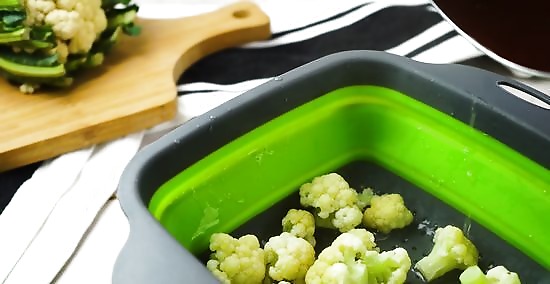
Drain the cauliflower through a strainer. Set a strainer or cauliflower in a sink. Turn off the burner and pour the cauliflower through the strainer so the hot water drains. Use caution when you lift the pot of hot water.
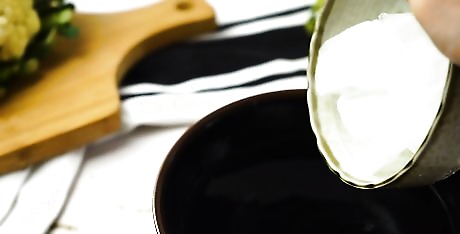
Make an ice bath. Fill a large bowl with ice and pour in enough cold water to come about 3/4 of the way up the sides. You'll need the extra space at the top of the bowl to allow for the cauliflower.
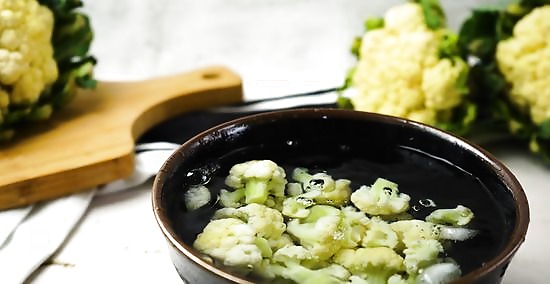
Put the cauliflower in the ice bath for 3 minutes. Use a slotted spoon to transfer the cauliflower to the ice water. Push down on the cauliflower so it's submerged in the ice water and chill it for 3 minutes. Putting the cauliflower in the ice bath stops the florets from cooking.
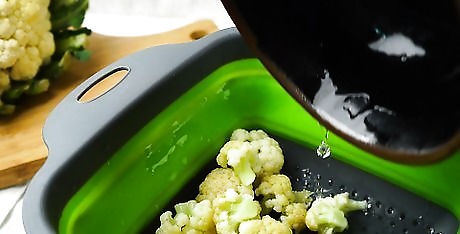
Place the blanched cauliflower in a strainer to drain. Lift the cauliflower out of the ice water and put it in a fine mesh strainer. The water should drain from the cauliflower. Use the cauliflower or dry it before you store it.
Steaming
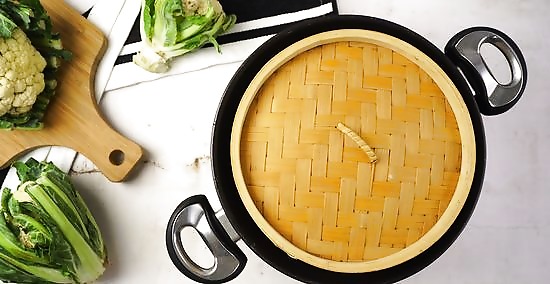
Place a steamer basket in a pot with 1 in (2.5 cm) of water. Set an expandable metal steamer basket into a pot and pour the water down the side of the pot. Put the lid on the pan. The steamer basket should be about 1 in (2.5 cm) above the water. Ensure that the basket doesn't touch the water.
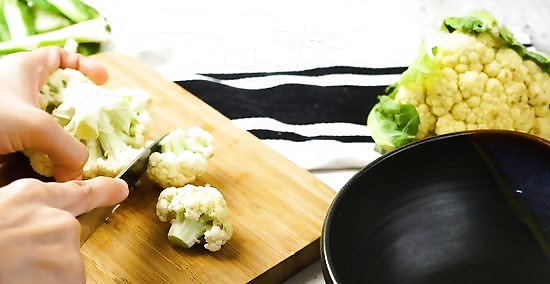
Trim the cauliflower and bring the water to a boil. Turn the burner to high so the water begins to boil. While you're waiting for the water to heat, rinse as much cauliflower as you'd like to blanch. Use a sharp knife to trim the cauliflower into 1 in (2.5 cm) florets. If you'd like to blanch a few heads of cauliflower, you may need to steam them in batches.

Add the cauliflower to the basket and steam it for 4 1/2 minutes. Once the water boils, lift up the lid from the pot and place the cauliflower florets in the steamer basket. Put the lid back on the pot and set a timer for 4 1/2 minutes.

Fill a bowl with ice water. While the cauliflower steams, fill a large bowl with ice. Pour enough cold water into the bowl to come about 3/4 of the way up the sides. While there's no set amount of ice water per pound of cauliflower, you do need to use enough ice water so that the cauliflower can be completely submerged.
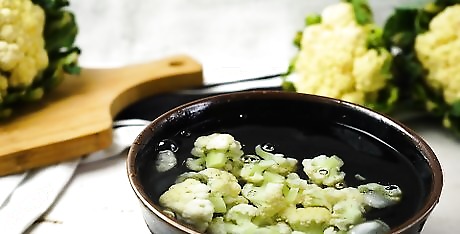
Transfer the cauliflower to the ice bath and chill it for 4 1/2 minutes. After the cauliflower has steamed, turn off the burner. Carefully lift the steamer basket up and out of the pot. Put the cauliflower into the ice water so the florets are covered and leave them to chill completely. The ice water will stop the cauliflower from cooking further. Use caution when you lift the hot steamer basket out of the pot.

Drain the blanched cauliflower. Use a slotted spoon to lift the cold cauliflower out of the ice water. Place it in a fine mesh strainer so excess water drips out of the cauliflower. Then you can use or store the blanched cauliflower.
Using or Storing Blanched Cauliflower

Dry the blanched cauliflower before you store it. Lay paper towels on a plate or baking sheet and transfer the drained cauliflower florets onto it. Use the paper towels to pat the florets completely dry. The paper towels will absorb excess moisture that could cause the cauliflower to spoil.
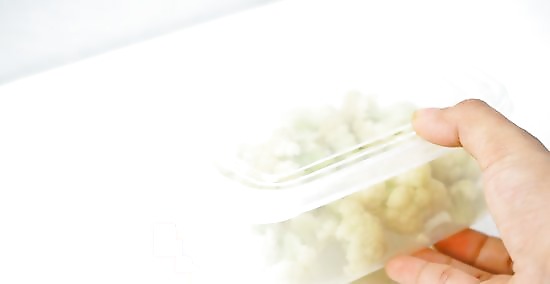
Refrigerate blanched cauliflower for up to 3 to 5 days. Transfer the cooled cauliflower to a shallow airtight storage container. Put the container in the refrigerator and chill the cauliflower for up to 3 to 5 days.

Freeze the blanched cauliflower for up to 6 months. Spread the blanched cauliflower in a single layer on a rimmed baking sheet. Place the sheet in the freezer and leave the cauliflower to freeze completely. This should take about 1 hour. Transfer the frozen cauliflower to airtight containers and freeze them for up to 6 months. Remember to label and date the containers of cauliflower. To use the frozen cauliflower, roast them directly from the freezer, add the frozen florets to soups, or boil the cauliflower and mash it until it's smooth.
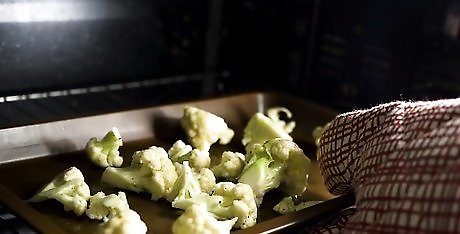
Roast the blanched cauliflower. Arrange the cauliflower on a rimmed baking sheet so the florets are in a single layer. Toss the cauliflower with a few spoon-fulls of vegetable or olive oil and salt and pepper according to your taste. Bake the cauliflower in a 425 °F (218 °C) oven for 30 minutes. The roasted cauliflower should become browned and very tender once it's finished cooking. Use your favorite spices or herbs such as Italian seasoning, za'atar, or curry.
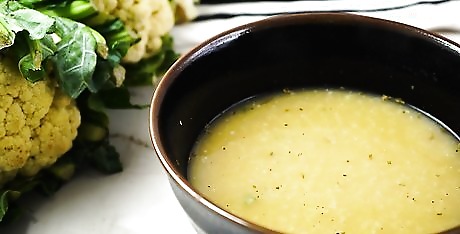
Puree blanched cauliflower to make soup. Sauté your onions, garlic, or shallots in a little butter and add blanched cauliflower to the pot. Cover the vegetables with vegetable broth, chicken broth, or half-and-half. Then use an immersion blender to puree the ingredients until they're smooth. Season the soup with spices, herbs, or fragrant cheese such as Parmesan or Stilton.















Comments
0 comment